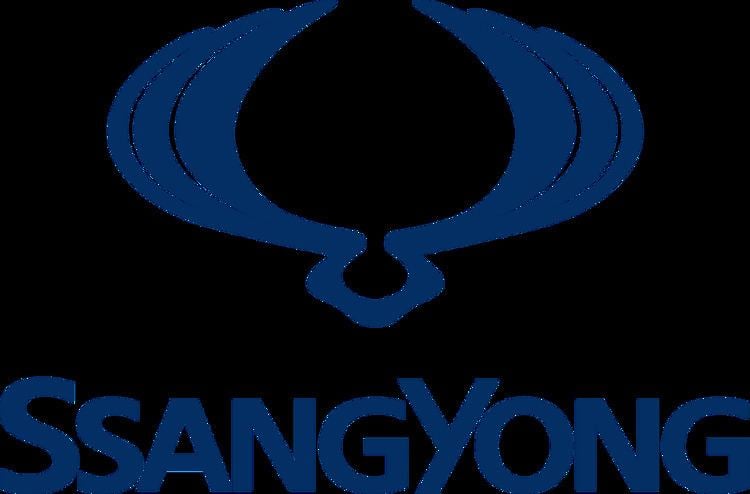Native name 쌍용자동차 주식회사 Traded as KRX: 003620 Key people Lee Yoo-il, CEO Founded 4 March 1954 | Type Public Industry Automotive Headquarters Pyeongtaek, South Korea | |
 | ||
Area served Worldwide (except North America) CEO Jong Sik Choi (24 Mar 2015–) Stock price 003620 (KRX) ₩ 7,990 +200.00 (+2.57%)30 Mar, 3:30 PM GMT+9 - Disclaimer Parent organizations Mahindra & Mahindra, Mahindra Group Profiles | ||
Ssangyong motor company applies for court receivership file
SsangYong Motor Company(Korean: 쌍용자동차, [s͈aŋjoŋ dʑadoŋtɕʰa]) (meaning Double Dragons Motor Vehicles) is the fourth largest South Korea-based automobile manufacturer. It is a subsidiary of Indian multinational Mahindra & Mahindra Limited.
Contents
- Ssangyong motor company applies for court receivership file
- Ssangyong motor to export 2 108 suvs for the peruvian police
- Story
- Factories
- References
A 70% share of SsangYong was acquired by Mahindra & Mahindra Limited in February 2011, after being named the preferred bidder in 2010 to acquire the bankruptcy-protected company. Mahindra's acquisition was approved by South Korea's Free Trade Commission.
Ssangyong motor to export 2 108 suvs for the peruvian police
Story
SsangYong originally started out as two separate companies; Ha Dong-hwan Motor Workshop (established in 1954) and Dongbang Motor Co (established in 1962). In mid-1963, the two companies merged into Ha Dong-hwan Motor Co.
In 1964, Hadonghwan Motor Company started building jeeps for the US Army as well as trucks and buses. Beginning in 1976, Hadonghwan produced a variety of special purpose vehicles. After changing its name to Dong-A Motor in 1977, it was taken over by SsangYong Business Group in 1986 and changed its name to SsangYong Motor. In 1987, it acquired United Kingdom-based specialty car maker Panther Westwinds.
In 1991, SsangYong started a technology partnership with Daimler-Benz. The deal was for SsangYong to develop an SUV with Mercedes-Benz technology. This was supposedly to allow SsangYong to gain footholds in new markets without having to build their own infrastructure (utilizing existing Mercedes-Benz networks) while giving Mercedes a competitor in the then-booming SUV market. This resulted in the Musso, which was sold first by Mercedes-Benz and later by SsangYong.
SsangYong further benefited from this alliance, long after Daimler-Benz stopped selling the Musso, producing a badge engineered version of the Mercedes-Benz MB100, the Istana and using Daimler designs in many other models, including the second-generation Korando (engine and transmission), the Rexton (transmission), the Chairman H (chassis and transmission) and the Kyron (transmission).
In 1997, Daewoo Motors, now Tata Daewoo, bought a controlling stake from the SsangYong Group, only to sell it off again in 2000, because the conglomerate ran into deep financial troubles. In late 2004, the Chinese automobile manufacturer SAIC took a 51% stake of SsangYong Motor Company.
In January 2009, after recording a $75.42 million loss, the company was put into receivership. This may have been due to the global economic crisis and shrinking demand. On August 14, 2009, worker strikes finished at the SsangYong factory and production commenced again after 77 days of disruption. Company employees and analysts have also blamed SAIC for stealing technology related to hybrid vehicles from the company and failing to live up to its promise of continued investment. SAIC denied allegations of technology theft by the company's employees. However, SAIC was charged by the South Korean prosecutor's office for violating company regulations and the South Korean law when it ordered and carried out the transfer of SsangYong's proprietary technology developed with South Korean government funding over to SAIC researchers.
In 2010, Daewoo Motor Sales was dropped by General Motors. The long-time dealership partner then signed a deal with the SsangYong Motor Company to supply new vehicles to sell (specifically the Rodius, Chairman W and Chairman H), in return for the injection of ₩20,000,000,000 ($17.6 million) into the car maker still recovering from bankruptcy. The deal is non-exclusive, meaning SsangYong will also sell vehicles through private dealers.
In April 2010, the company released a statement citing interest of three to four local and foreign companies in acquiring SsangYong Motor Company, resulting in shares rising by 15%. The companies were later revealed to be Mahindra & Mahindra and the Ruia Group of India and SM Aluminum, Seoul Investments and French-owned Renault Samsung Motors of South Korea. In August 2010, Mahindra & Mahindra Limited was chosen as the preferred bidder for SsangYong. The acquisition was completed in February 2011 and cost Mahindra 522.5 billion Won.
